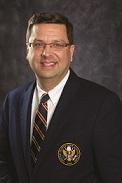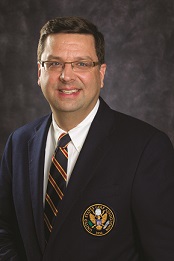

Sports Destination Management: Next year, golf returns to the Summer Olympics. Do you expect the game to grow as a result?
Rand Jerris: The Olympic Games will encourage organizations to invest in the development of golf in their countries. These might be places where currently, there isn’t any golf – or at least where golf isn’t growing, and those will certainly benefit. We’re starting to see unprecedented rates of growth in areas such as South America and Asia.
SDM: Has the drought in California made golf course managers more cognizant of the need to be more ecologically sensitive?
Jerris: California is the latest but in the last 10 or so years, we have had significant droughts in other areas of the country. As a result, the widespread use of water gets a little more controversial, even in the northeast where the water supply isn’t a challenge at all.
Overall, there are concerns about making golf courses more sustainable and more environmentally responsible. We are looking at the nutrients we apply to the course, the fungicides, the herbicides and more. There have been some really positive studies, some even pertaining to the use of golf courses as habitats for endangered species. In addition, one of the nice trends we’re seeing is golf courses removing 20 to 30 percent of their total acreage in the rough, and replacing a lot of turf with materials like pine straw and native plants. That way, golf course managers are spending less to mow and maintain the course.
The biggest part, of course, is changing people’s minds about how a golf course is supposed to look and feel. We need golfers to accept a golf course that is firmer and dryer than they’re used to. We’re already seeing success with that; in Pinehurst, North Carolina, at the Women’s Open, we had people saying it was the best course they had ever played.
SDM: What are some of the initiatives USGA is using to attract new players?
Jerris: USGA is one of five major organizations in the sport and we’re all working together. We want to address a lot of the common misperceptions, the first being that golf is too expensive. About 90 percent of the golf in this country is played on public courses and the average greens fee is $26, which is less than a ticket to a major sporting event. The other idea is that golf takes up too much time; a six-hour experience for 18 holes is considered too long. We’re telling people that golf can be a nine-hole game, even a six-hole or a two-hole game, whatever you have time for.



We’re seeing a lot of growth in non-traditional golf experiences, like Top Golf offers, designed to make the game fun. Following the economic decline in 2008,our participation numbers have been stable, and between 2013 and 2014, we saw a one percent increase in the rounds of golf being played. We’re very encouraged by that. In addition, the five organizations that make up our industry are coming together to offer a number of programs to bring in new programs; they include Drive, Chip and Putt; Get Golf Ready, LPGA-USGA Girls Golf, PGA Junior League Golf and The First Tee. All of these have been very successful.
SDM: Are there initiatives to increase diversity in the sport?
Jerris: I think the vision for the game is that the face of golf is the face of America. We know that we need to bring in more women, and we definitely have a focus on that. We want golf to be more multi-racial and multi-ethnic. We want to change the culture around the game to make it more welcoming and more open.

 www.usga.org
www.usga.org